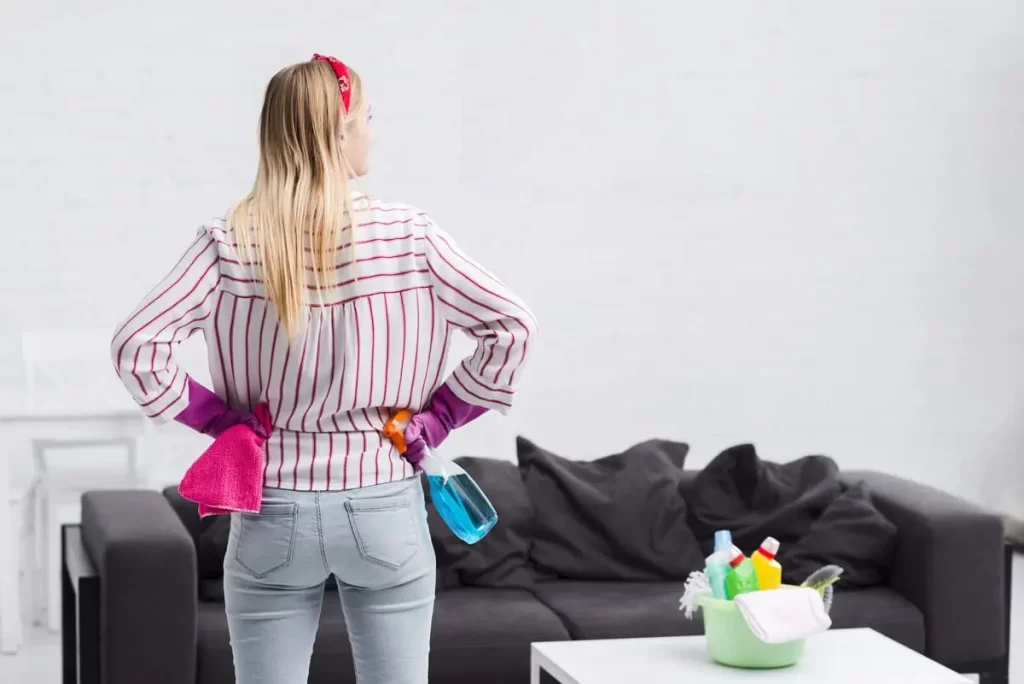Mold infestation is a common household problem that can not only damage your property but also pose serious health risks to you and your family. Fortunately, there are effective methods for removing mold from your home. In this comprehensive guide, we’ll explore step-by-step techniques to eradicate mold and prevent its return.
Removing Mold from Your Home: Identifying Mold Infestation
Before embarking on the removal process, it’s crucial to identify the presence of mold in your home. Here are some signs to look out for:
Visual Inspection
Inspect areas prone to moisture accumulation, such as bathrooms, basements, and kitchens, for any visible signs of mold growth. Look for black, green, or white patches on surfaces.

Musty Odor
Mold often emits a musty odor, especially in enclosed spaces. If you detect a lingering musty smell, it could indicate mold growth.
Allergic Reactions
Persistent coughing, sneezing, or skin irritation among household members may signal exposure to mold spores.
Steps to Remove Mold
Once you’ve confirmed the presence of mold, it’s essential to take prompt action to eliminate it. Follow these steps for effective mold removal:
Safety Precautions
Before starting the removal process, ensure you wear protective gear such as gloves, goggles, and a mask to prevent exposure to mold spores.
Ventilation
Open windows and use fans to improve ventilation in the affected area. This helps disperse mold spores and accelerates the drying process.
Cleaning Solutions
Prepare a cleaning solution by mixing water with detergent or a commercial mold remover. Apply the solution to mold-affected surfaces and scrub vigorously using a brush or sponge.
Disposal
Dispose of any porous materials contaminated with mold, such as carpets or cardboard boxes, as they may be difficult to fully clean and can facilitate mold regrowth.
Drying
Thoroughly dry cleaned surfaces to prevent moisture accumulation, which is conducive to mold growth. Use dehumidifiers or fans to expedite the drying process.
Preventing Mold Recurrence
Prevention is key to avoiding future mold infestations. Implement the following measures to keep mold at bay:
Proper Ventilation
Ensure adequate ventilation in bathrooms, kitchens, and other moisture-prone areas to reduce humidity levels and inhibit mold growth.
Regular Maintenance
Inspect your home regularly for any signs of water leaks or moisture buildup, and address them promptly to prevent mold from taking hold.
Humidity Control
Maintain indoor humidity levels below 60% to discourage mold growth. Consider using dehumidifiers in damp areas, especially during humid seasons.Mold-Resistant Products
Consider using mold-resistant paint or building materials in areas susceptible to mold, such as bathrooms and basements.
FAQ: Frequently Asked Questions
Can I remove mold myself, or should I hire a professional?
Minor mold infestations can often be handled DIY, but extensive or recurring mold problems may require professional remediation.
How long does it take to remove mold from a home?
The time required for mold removal depends on the extent of the infestation and the size of the affected area. It can range from a few hours to several days.
Is mold removal covered by homeowners’ insurance?
In some cases, mold removal may be covered by homeowners’ insurance, particularly if it’s the result of a covered peril such as water damage from a burst pipe. However, coverage varies, so it’s essential to review your policy.
What should I do if I discover mold in my HVAC system?
Mold growth in HVAC systems requires immediate attention. It’s best to shut down the system and contact a professional HVAC technician for thorough cleaning and inspection